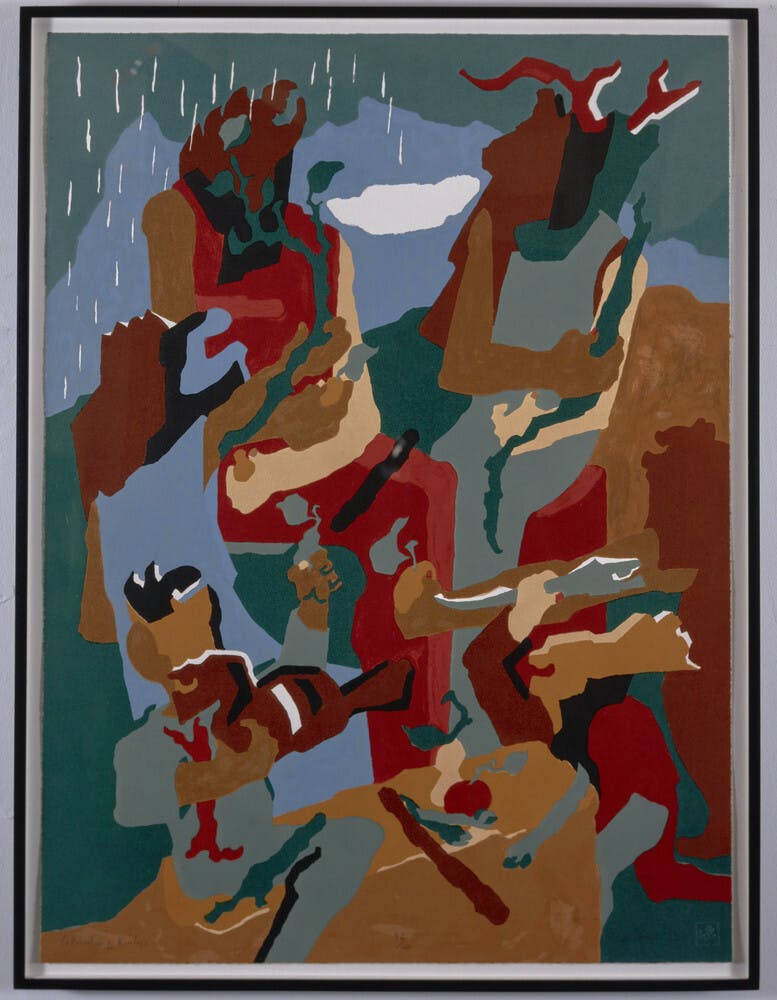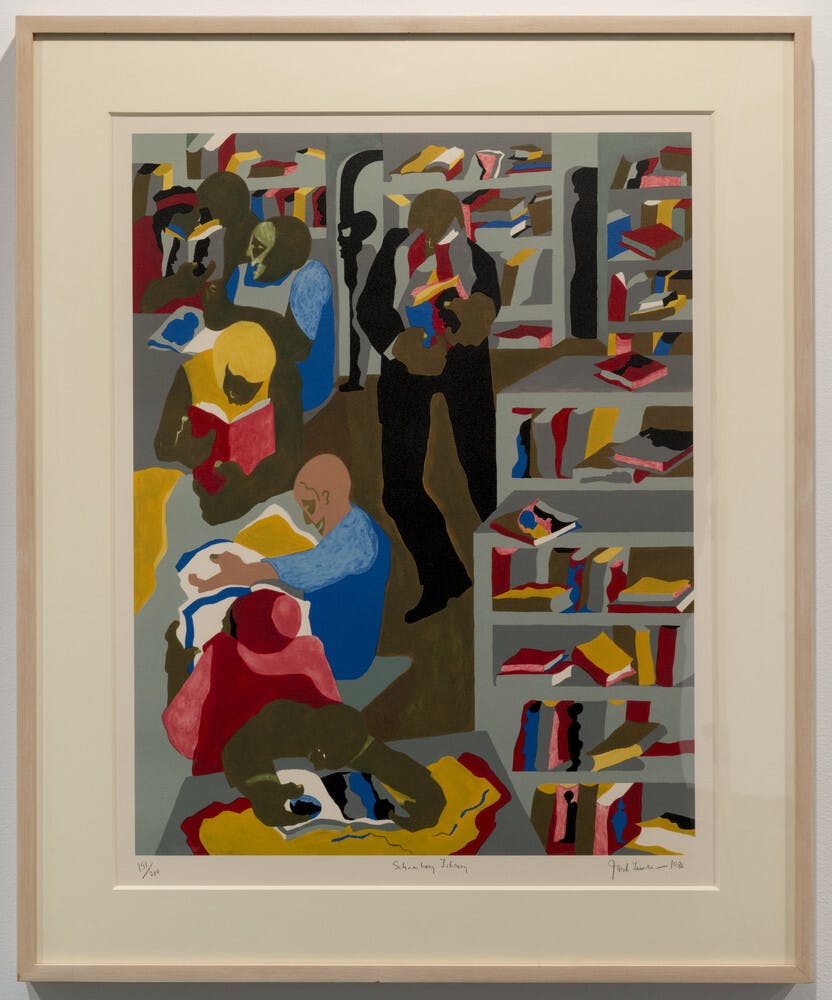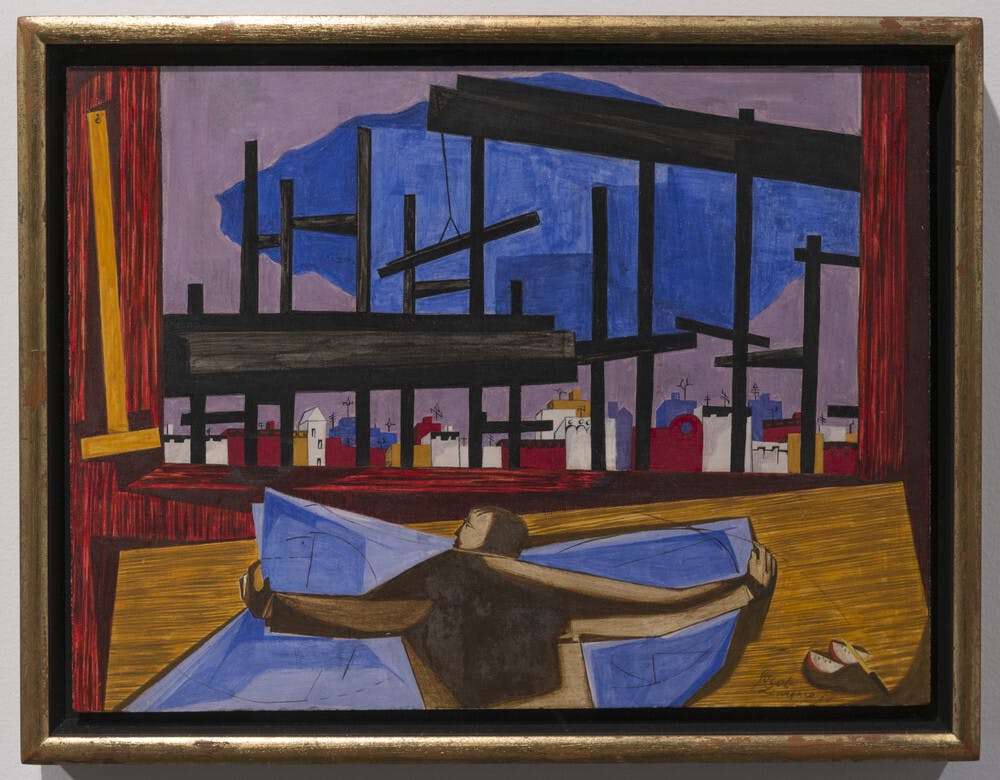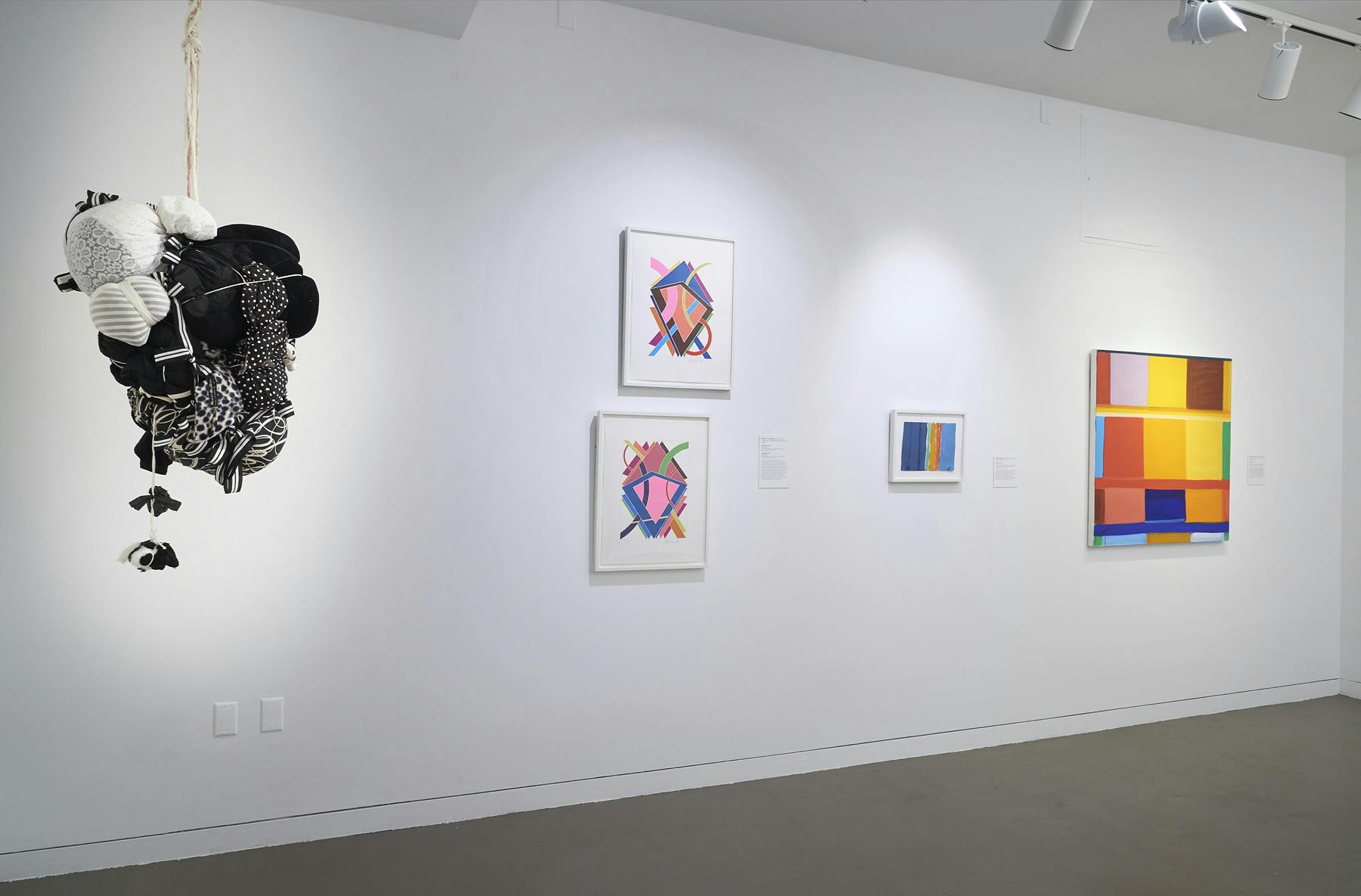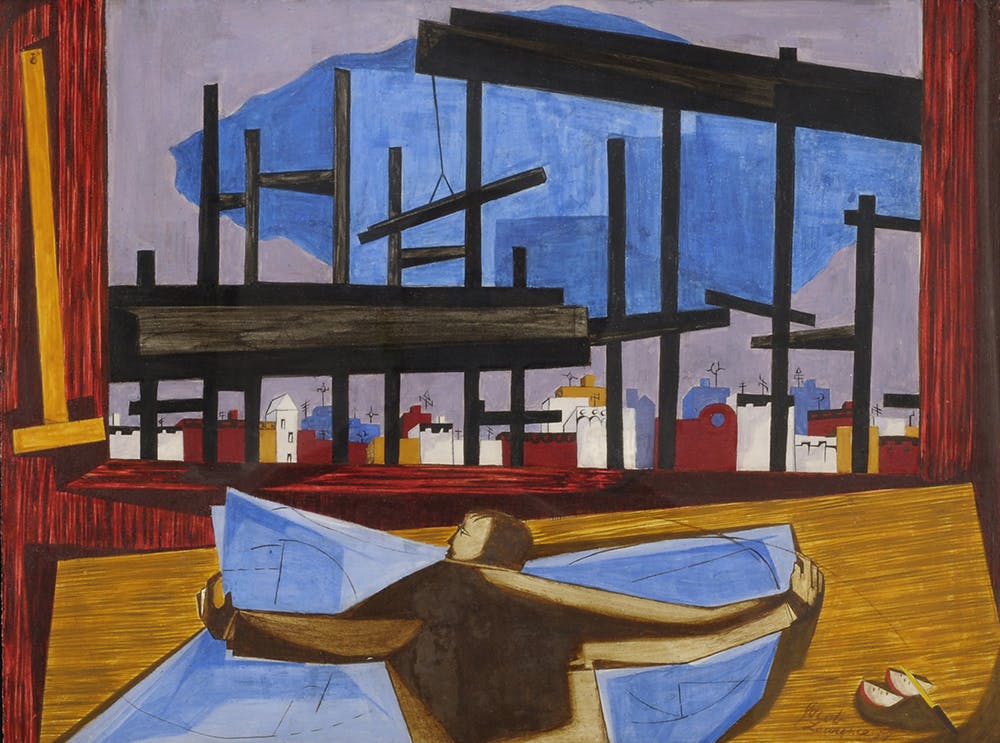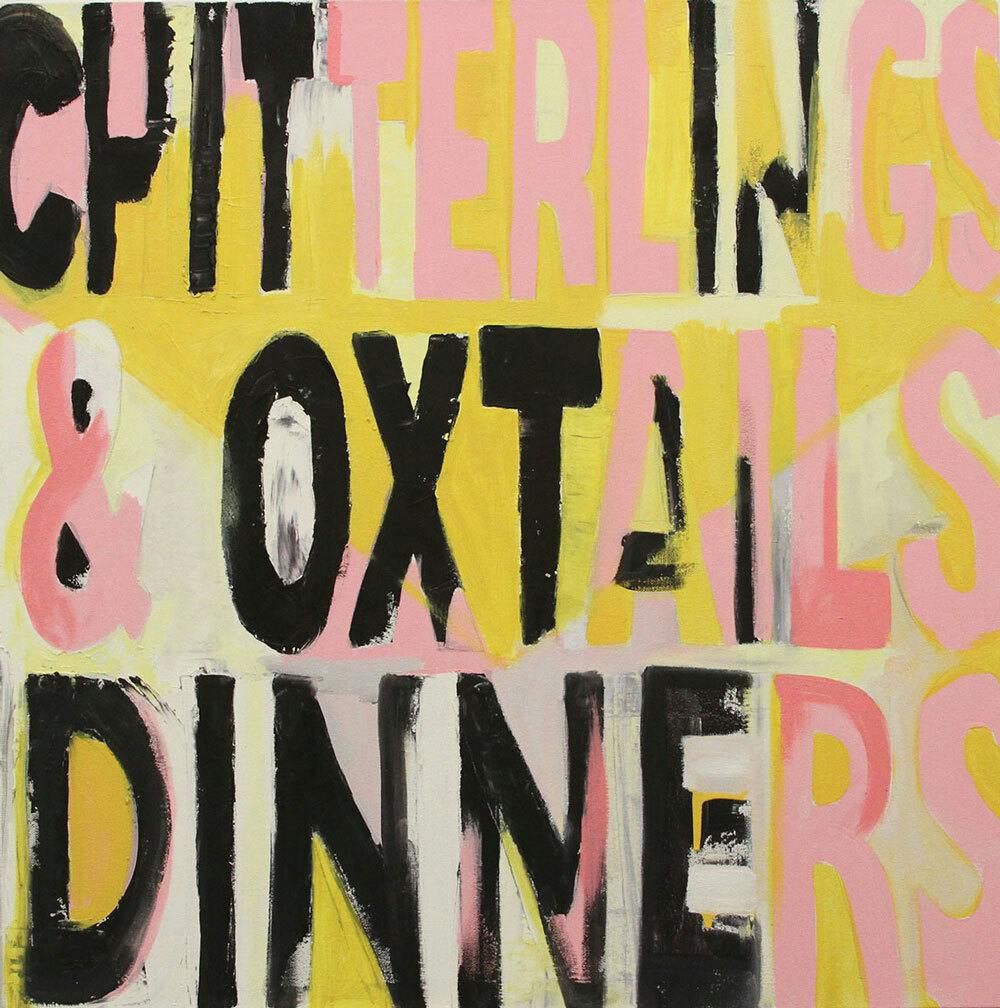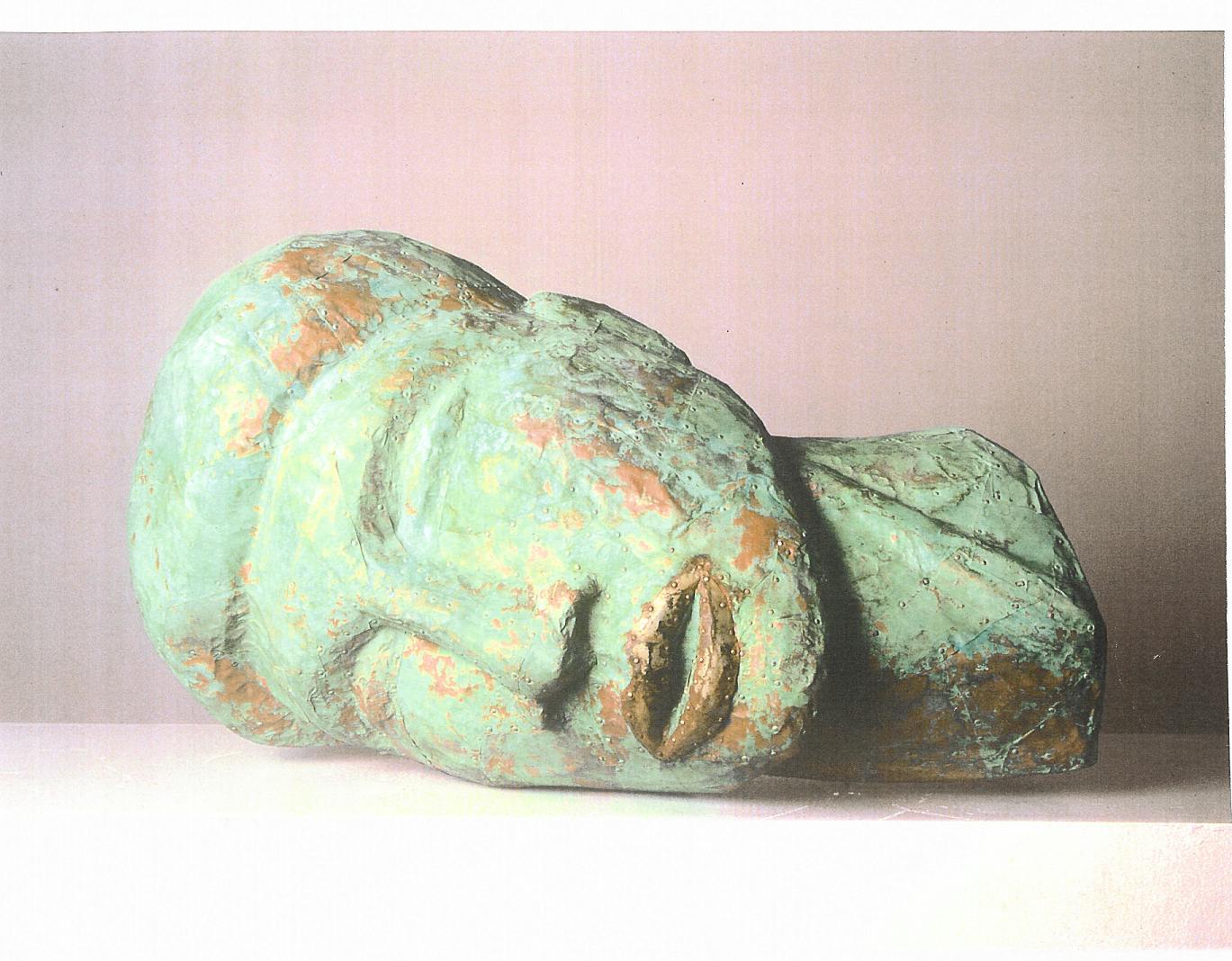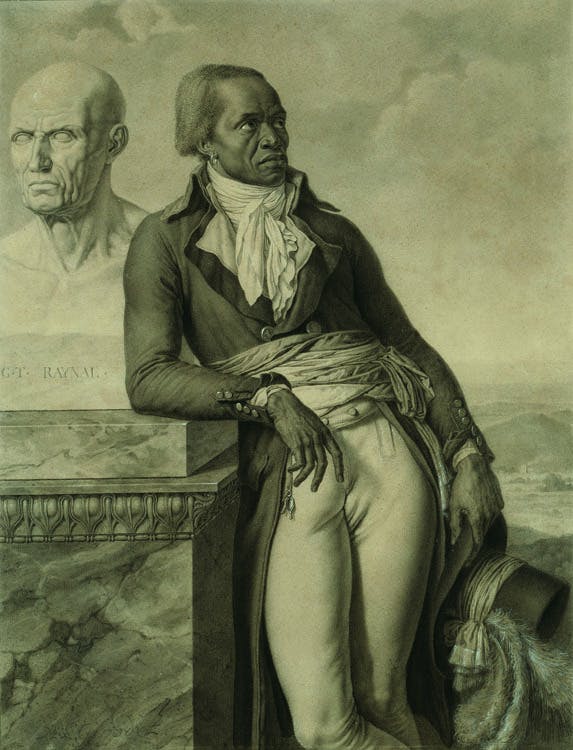Jacob Lawrence
(1917–2000)Biography
Through his vivid depictions of Black life in America, Jacob Lawrence was one of the first Black artists in the United States to gain national recognition for his dynamic, incisive paintings.
Through his vivid depictions of Black life in America, Jacob Lawrence was one of the first Black artists in the United States to gain national recognition for his dynamic, incisive paintings. Born in New Jersey, Lawrence moved to Harlem at age twelve with his family. There, he enrolled at the Utopia Children’s Center—an organization run by painter Charles Alston—where he participated in an after-school arts and crafts program. Painting intermittently as a teenager, Lawrence worked odd jobs to support his family through the Great Depression before enrolling in the New Deal jobs program Civilian Conservation Corps and moving to upstate New York in the early 1930s. Upon his return to Harlem a few years later, he worked at the Harlem Community Art Center—directed by sculptor Augusta Savage—and painted some of his earliest scenes of his neighborhood. He also began visiting the Schomburg Center for Research in Black Culture to read about African and African American culture. In 1938, he began working in the easel division of the Work Progress Administration’s Federal Art Project.
By age twenty-three, Lawrence had completed five narrative series on figures such as Toussaint L’Ouverture, Frederick Douglass, and Harriet Tubman. His signature style displays his attention to composition, color, and shape—brightly colored figures in a flattened, fragmented form and space. He generated a multipanel narrative series that centered on the Black experience in the United States and beyond, featuring the histories of events like the American Revolution and the Great Migration.
In 1941, Lawrence became the first African American artist to have their work acquired by the Museum of Modern Art. An avid teacher, Lawrence taught at Black Mountain College, the Art Students League, Pratt Institute, and the Skowhegan School, and served on the faculty of the University of Washington, Seattle from 1971 to 1986. The Studio Museum has presented his work in both solo and group exhibitions, such as Toussaint L’Ouverture Series by Jacob Lawrence (1969) and Jacob Lawrence: Frederick Douglass & Harriet Tubman Series of 1938– 1940 (1991).
Exhibitions and Events
Jacob Lawrence
(1917–2000)Celebration of Heritage, 1992
Biography
Through his vivid depictions of Black life in America, Jacob Lawrence was one of the first Black artists in the United States to gain national recognition for his dynamic, incisive paintings.
Through his vivid depictions of Black life in America, Jacob Lawrence was one of the first Black artists in the United States to gain national recognition for his dynamic, incisive paintings. Born in New Jersey, Lawrence moved to Harlem at age twelve with his family. There, he enrolled at the Utopia Children’s Center—an organization run by painter Charles Alston—where he participated in an after-school arts and crafts program. Painting intermittently as a teenager, Lawrence worked odd jobs to support his family through the Great Depression before enrolling in the New Deal jobs program Civilian Conservation Corps and moving to upstate New York in the early 1930s. Upon his return to Harlem a few years later, he worked at the Harlem Community Art Center—directed by sculptor Augusta Savage—and painted some of his earliest scenes of his neighborhood. He also began visiting the Schomburg Center for Research in Black Culture to read about African and African American culture. In 1938, he began working in the easel division of the Work Progress Administration’s Federal Art Project.
By age twenty-three, Lawrence had completed five narrative series on figures such as Toussaint L’Ouverture, Frederick Douglass, and Harriet Tubman. His signature style displays his attention to composition, color, and shape—brightly colored figures in a flattened, fragmented form and space. He generated a multipanel narrative series that centered on the Black experience in the United States and beyond, featuring the histories of events like the American Revolution and the Great Migration.
In 1941, Lawrence became the first African American artist to have their work acquired by the Museum of Modern Art. An avid teacher, Lawrence taught at Black Mountain College, the Art Students League, Pratt Institute, and the Skowhegan School, and served on the faculty of the University of Washington, Seattle from 1971 to 1986. The Studio Museum has presented his work in both solo and group exhibitions, such as Toussaint L’Ouverture Series by Jacob Lawrence (1969) and Jacob Lawrence: Frederick Douglass & Harriet Tubman Series of 1938– 1940 (1991).
